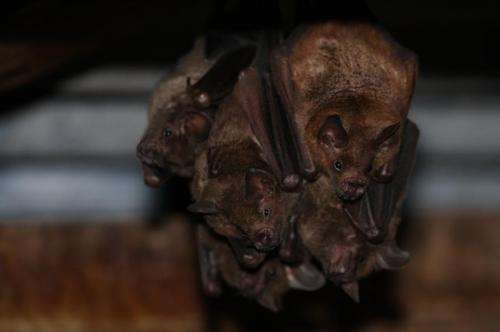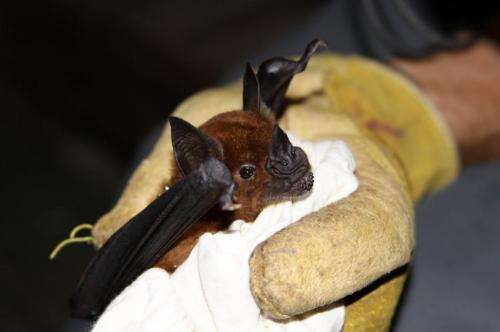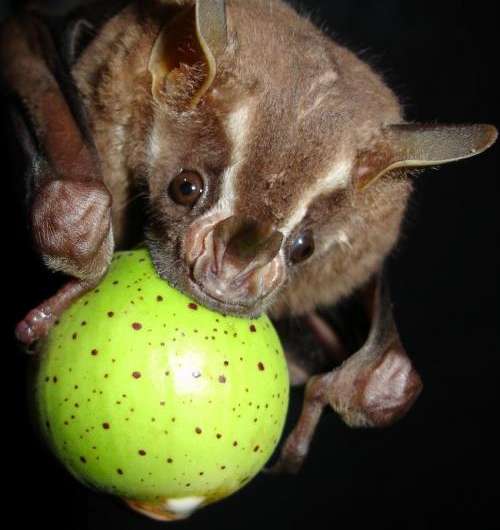April 17, 2014 report
Field study suggests islands and forest fragments are not as alike as thought

An international team of biogeographers has found that assumptions about similarities between biodiversity in forest fragments and true islands are not as clear-cut as has been assumed. In their paper published in the journal Nature, the team reports on the results of a field study they conducted along with a comparative analysis of data from a much wider source.
For many years, scientists who study biodiversity in different geographical regions have relied on assumptions that forest fragments that exist in a sea of crops are similar to islands that exist in rivers, lakes or oceans. In this new study, the research team working in Cost Rica, challenges such assumptions.
Scientists know that islands more distant from continents are generally less diverse than those that are closer. At the same time, it has seemed intuitive that an island in the middle of a small lake would likely have the same makeup as a forest of roughly the same size surrounded by a sea of cropland. To find out if that is indeed the case, the researchers conducted field studies in two regions in Costa Rica, separated by just a few miles. One was an island in a lake, the other a forest "island" surrounded by a coffee plantation. Specifically, they counted bats, both their numbers and how many species were present. Afterwards, they compared the numbers found for the two sites and found striking differences. Not only were there far more bats living on the land-based island, but there were more species as well.
Suspecting they were on to something, the researchers turned to database information regarding biodiversity in 52 other cases as part of 26 studies—all told more than 700 species were included. They report generalized findings that suggest that separate biodiversity theories be developed for true islands versus forest fragment islands.

The findings by the team could potentially impact biodiversity studies the world over and cause changes to the way land is managed. With a constant tug-of-war going on between those involved in efforts to preserve plants and animals in native environments and those who see land as a resource to be plowed under to feed people, it's critical that all involved have accurate information when plans are made. The work done by the team in this latest study may offer new ways to help both sides achieve their goals.

More information: Predicting biodiversity change and averting collapse in agricultural landscapes, Nature (2014) DOI: 10.1038/nature13139
Abstract
The equilibrium theory of island biogeography is the basis for estimating extinction rates and a pillar of conservation science. The default strategy for conserving biodiversity is the designation of nature reserves, treated as islands in an inhospitable sea of human activity5. Despite the profound influence of islands on conservation theory and practice3, 4, their mainland analogues, forest fragments in human-dominated landscapes, consistently defy expected biodiversity patterns based on island biogeography theory. Countryside biogeography is an alternative framework, which recognizes that the fate of the world's wildlife will be decided largely by the hospitality of agricultural or countryside ecosystems. Here we directly test these biogeographic theories by comparing a Neotropical countryside ecosystem with a nearby island ecosystem, and show that each supports similar bat biodiversity in fundamentally different ways. The island ecosystem conforms to island biogeographic predictions of bat species loss, in which the water matrix is not habitat. In contrast, the countryside ecosystem has high species richness and evenness across forest reserves and smaller forest fragments. Relative to forest reserves and fragments, deforested countryside habitat supports a less species-rich, yet equally even, bat assemblage. Moreover, the bat assemblage associated with deforested habitat is compositionally novel because of predictable changes in abundances by many species using human-made habitat. Finally, we perform a global meta-analysis of bat biogeographic studies, spanning more than 700 species. It generalizes our findings, showing that separate biogeographic theories for countryside and island ecosystems are necessary. A theory of countryside biogeography is essential to conservation strategy in the agricultural ecosystems that comprise roughly half of the global land surface and are likely to increase even further.
Journal information: Nature
© 2014 Phys.org



















